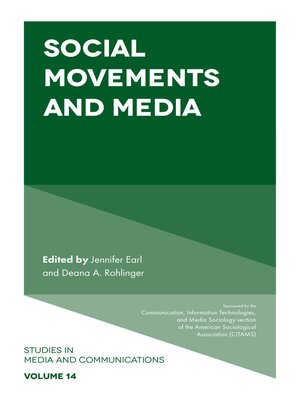Studies in Media and Communications, Volume 14
ebook ∣ Social Movements and Media · Studies in Media and Communications
By Jennifer S. Earl

Sign up to save your library
With an OverDrive account, you can save your favorite libraries for at-a-glance information about availability. Find out more about OverDrive accounts.
Find this title in Libby, the library reading app by OverDrive.



Search for a digital library with this title
Title found at these libraries:
| Library Name | Distance |
|---|---|
| Loading... |
Sponsored by the Communication, Information Technologies, and Media Sociology section of the American Sociological Association (CITAMS), this volume focuses on media and social movements. Contributing authors draw on cases as diverse as the Harry Potter Alliance to youth oriented, non-profit educational organizations, in order to assess systematically how media environments, systems, and usage affect collective action in the 21st century. The volume demonstrates that the study of media and social movements has developed into a vibrant sub-field stretched across Communication Studies, Political Science, and Sociology, and illustrates the need for serious interdisciplinary research.
Chapters in the volume reinforce the need to examine many kinds of media (such as fiction) for social movements, particularly in terms of recruitment and framing. They show the critical importance of connecting classic and contemporary social movement research when trying to understand topics such as recruitment, identity, and discourse, even when these are playing out in the digital world. Chapters explore the difficulties that organizations face in organizing whether or not they are primarily offline or online; the ways that digital media usage affects various organizational functions and effectiveness; and the importance of examining the role of youth in social movements across all of these topics.
Chapters in the volume reinforce the need to examine many kinds of media (such as fiction) for social movements, particularly in terms of recruitment and framing. They show the critical importance of connecting classic and contemporary social movement research when trying to understand topics such as recruitment, identity, and discourse, even when these are playing out in the digital world. Chapters explore the difficulties that organizations face in organizing whether or not they are primarily offline or online; the ways that digital media usage affects various organizational functions and effectiveness; and the importance of examining the role of youth in social movements across all of these topics.







